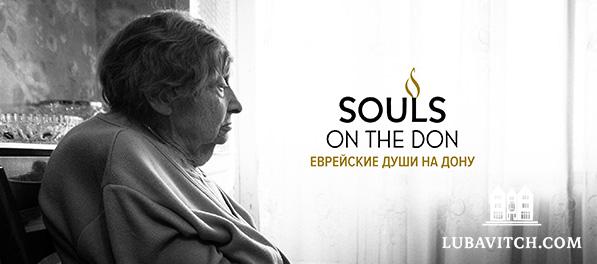Today, the 20th of Cheshvan, marks the birthday of the fifth Lubavitcher Rebbe, Rabbi Shalom DovBer Schneersohn. Born in the small town of Lubavitch in 1860, R. Shalom DovBer, who was known for his passion for Jewish education, founded the Tomchei Temimim yeshivah system, a pioneering vision for Jewish education which continues to this day. R. Shalom DovBer led Russian Jewry through the turbulent turn of the 20th century and was forced to flee from the village of Lubavitch in 1915, due to the advancing German army. Following WWI, he resettled the Chabad movement’s center from Lubavitch to Rostov-on-Don in southern Russia.
“My name is Yuri Zuzin, but you can just call me George.”
“Did you always know that you were Jewish?”
“When I was 14 years old, some of my friends called me a “zhid.” I never heard the word before, didn’t know its meaning, and didn’t know why they were calling me that. So, I asked my mother. She told me that we were Jews, and that we should not feel bad about it. On the contrary, being Jewish was something special. That was about the extent of my involvement in Judaism during communism. It wasn’t until after the fall of the Iron Curtain that I started coming to the synagogue.”
“Is there a message you’d like to give to the youth in the community?”
“Don’t forget who you are and never be ashamed of it. We don’t live in the Soviet times anymore.”

This conversation between an American millennial and an older Russian Jew took place a few weeks ago in Rostov-on-Don, a large port city in southeastern Russia, as part of a new photographic project called Souls on the Don. Yanky Ascher, the American, had previously visited the Russian metropolis on multiple occasions and was drawn to eclectic members of the local Jewish community. On this particular trip, he decided to embark on a journey that would document his interactions with local Jews, and photographs some of the fascinating people who made up the Jewish community of Rostov.
Souls on the Don, not unlike Humans of New York which provides a glimpse into the lives of strangers, open a lens onto the lives of others living far away, and thus revives a nearly forgotten chapter of Jewish history. But the former is more than just a snapshot of humanity; the subjects photographed offered meaningful insight and personal tales, ranging from the Holocaust and anti-Semitism to communism and Jewish revival.
“I believe that every generation should transmit its history to the next generation,” explains Ascher. “If you try to paint the whole picture of Russian Jewry today, you’ll find a rich history from the generation that has lived through communism and the Holocaust. But what I didn’t anticipate when I started the project were the stories that the young people told. There is a resurgence happening across the country, as young people are choosing to live as active Jews.”

The arresting images draw the reader in, with stories that weave a blend of old and new. In one photo, a middle-aged woman holding a telephone laments the underlying anti-Semitism of the communist era. “As a young woman, I had applied for a job. The interview went well and it seemed like they were going to hire me. When I showed my passport and my nationality was revealed, I was asked to wait a moment. A few minutes later, I had been informed that the position had already been filled.” Other depictions, like the one of a man being dragged by his beard through the streets of town, are more harrowing.
The city of Rostov, which lies on the banks of the Don River, has seen its Jewish community struggle through decades of communism, and reach near annihilation, when 27,000 of it members were murdered in a single massacre during WWII. Under the leadership of Chabad emissaries, Rabbi Chaim and Kaila Danzinger, the community is once again a welcome home for Jews and Judaism, with a thriving synagogue, a school, and robust programming that serves 10,000 local Jews.
The community is excited about the Souls on the Don project. Many locals are following it closely on social media. “The community is captivated by the idea of sharing their story with the world,” says Rabbi Danzinger. “It is giving them a sense of the historic importance of Jews in this city, and prompts them to examine their own personal history and Jewish identity.”

For the Chabad history buff, some of the stories are particularly compelling. Once the headquarters of Chabad-Lubavitch, Rostov is also the resting place of the fifth Lubavitcher Rebbe and is a magnet for Jews who continue to visit his resting place today.
In the photographs, one woman recalls her grandfather helping secure the property the Rebbe Rashab lived in when he first moved to the city. Another, Marina, describes how her grandfather, Abram Benyaminovitch Norman, was one of the few local Jews who participated in a stealth operation to relocate Rabbi Shalom DovBer’s grave in the winter of 1939. In the caption to her photo she recalls her grandfather’s personal account. “When they finally arrived at the new cemetery, they witnessed something shocking. As they were placing it in the grave, the casket opened up. Grandpa said that he saw the Rebbe’s holy body with his very eyes. After all those years, it did not decompose. It was still complete.”

During his trip, Ascher photographed and interviewed about 40 local Jews. He plans to return to Rostov in the near future to continue his series, possibly expanding it to cover more of the scope of the Russian Jewish experience, telling this story “one soul at a time.”

Be the first to write a comment.